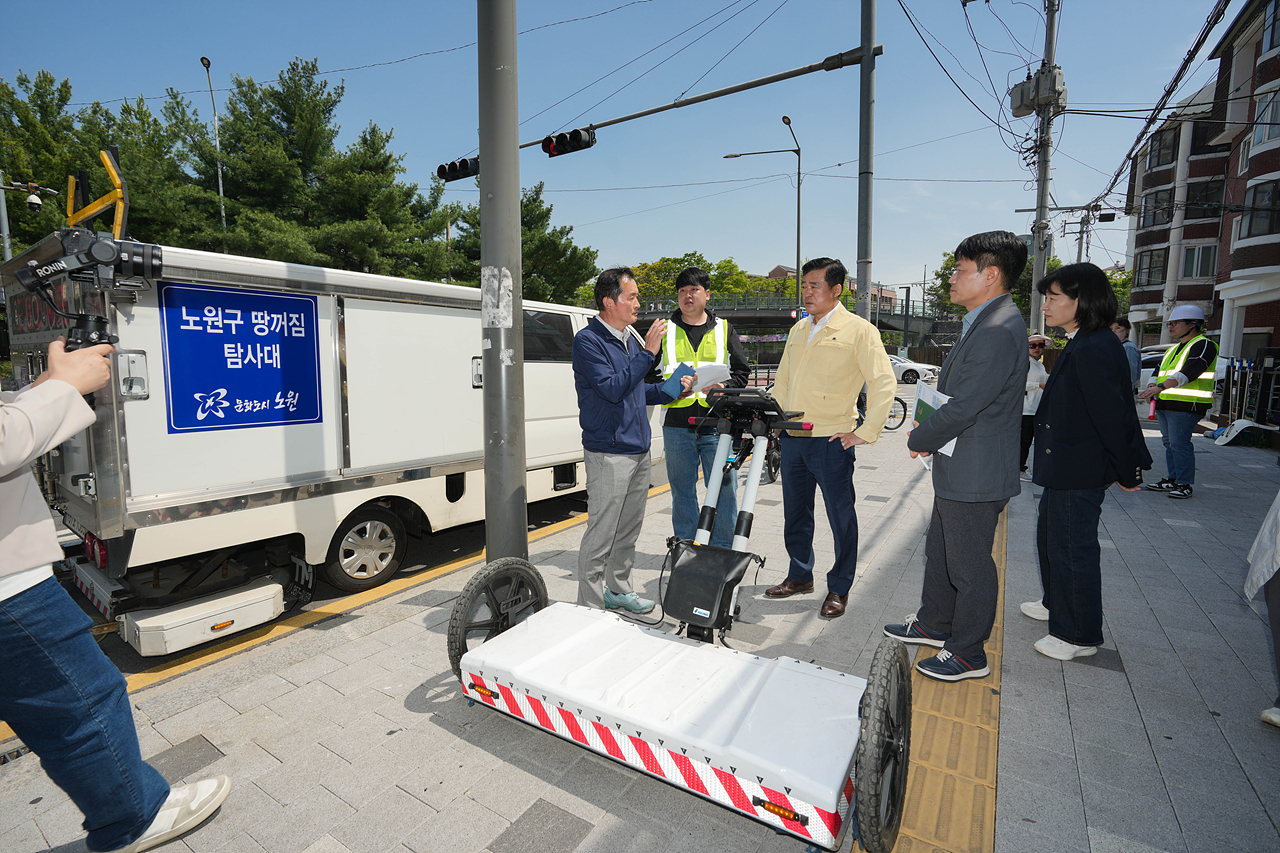
Myeongil-Dong Sinkhole
Recently, a series of sinkholes in Seoul have caused growing concern. In particular, a major sinkhole in Myeongil-dong, Gangdong-gu, became a national issue after a motorcycle rider died at the scene. The Myeongil-dong sinkhole emerged as a white minivan and the motorcycle were moving along the road. While the minivan was propelled out of the hole without falling in, the motorcycle dived straight into it.
The cause of the Gangdong-gu Myeongil-dong sinkhole appears to be a combination of weak ground conditions and construction on the extension of Seoul Subway Line 9. Below the site of the sinkhole lies a tunnel under construction, and the body of the motorcyclist was later found inside this tunnel.
Major Causes of Sinkholes
According to a recent report from the Seoul Metropolitan Government to the Ministry of Land, Infrastructure and Transport, two of the fifty areas in Seoul identified as high-risk for ground subsidence are located in Nowon-gu. These areas are considered to have a high risk of sinkhole formation due to unstable ground conditions.
In addition to underground construction, another major cause of sinkholes in Seoul is the rupture of waterworks and sewage pipes. Given this, Gongneung-dong, where many of these old pipelines are located, may also be at risk. According to the city’s data, Songpa-gu has the most old water pipes, followed by Seocho-gu and then Nowon-gu. In Nowon-gu, there are 412km of water pipes in total, and 181km of them—about 44%—are over 30 years old. Such aging infrastructure is prone to ruptures, making it a significant contributor to sinkhole risks. In fact, in January 2023, a heat transport pipe near Hwarangdae Station in Gongneung-dong, Nowon-gu, leaked, causing a shutdown of hot water and heating in the area.
Seoul’s Preparation for Sinkhole
To prevent the occurrence of sinkholes, the Seoul Metropolitan Government has decided to increase sewage usage fees. Approximately 200 billion won is spent annually to repair 100km of aging sewer pipelines. However, around 3,300km of sewer lines in the city are over 50 years old, posing a high risk of sinkhole formation and requiring urgent maintenance. To fund this effort, Seoul will raise sewage fees by 14% each year from 2026 to 2030, resulting in a total increase of 92.5%.
Is Nowon-gu Prepared?
In response to concerns of Nowon-gu residents, on April 30 this year, Chairman Youngjun Son of the Nowon District Council visited an underground inspection site in Gongneung-dong to examine safety efforts. The goal of the inspection was to alleviate residents’ fears and identify potential risks to prevent future sinkholes. The underground survey uses ground-penetrating radar (GPR), a method that emits electromagnetic waves into the ground to assess sub- surface conditions. Chairman Son emphasized the importance of transparency in sharing the survey results, noting that Nowon-gu has a high percentage of old water and sewage pipelines. He urged that any risks discovered be addressed immediately to reassure residents about ground safety.
Reporter
Donghyun Kwon
misspinkk10@seoultech.ac.kr
 Underground inspection site in Gongneung-dong
Underground inspection site in Gongneung-dong


 Comment 0
Comment 0 Posts containing profanity or personal attacks will be deleted
Posts containing profanity or personal attacks will be deleted